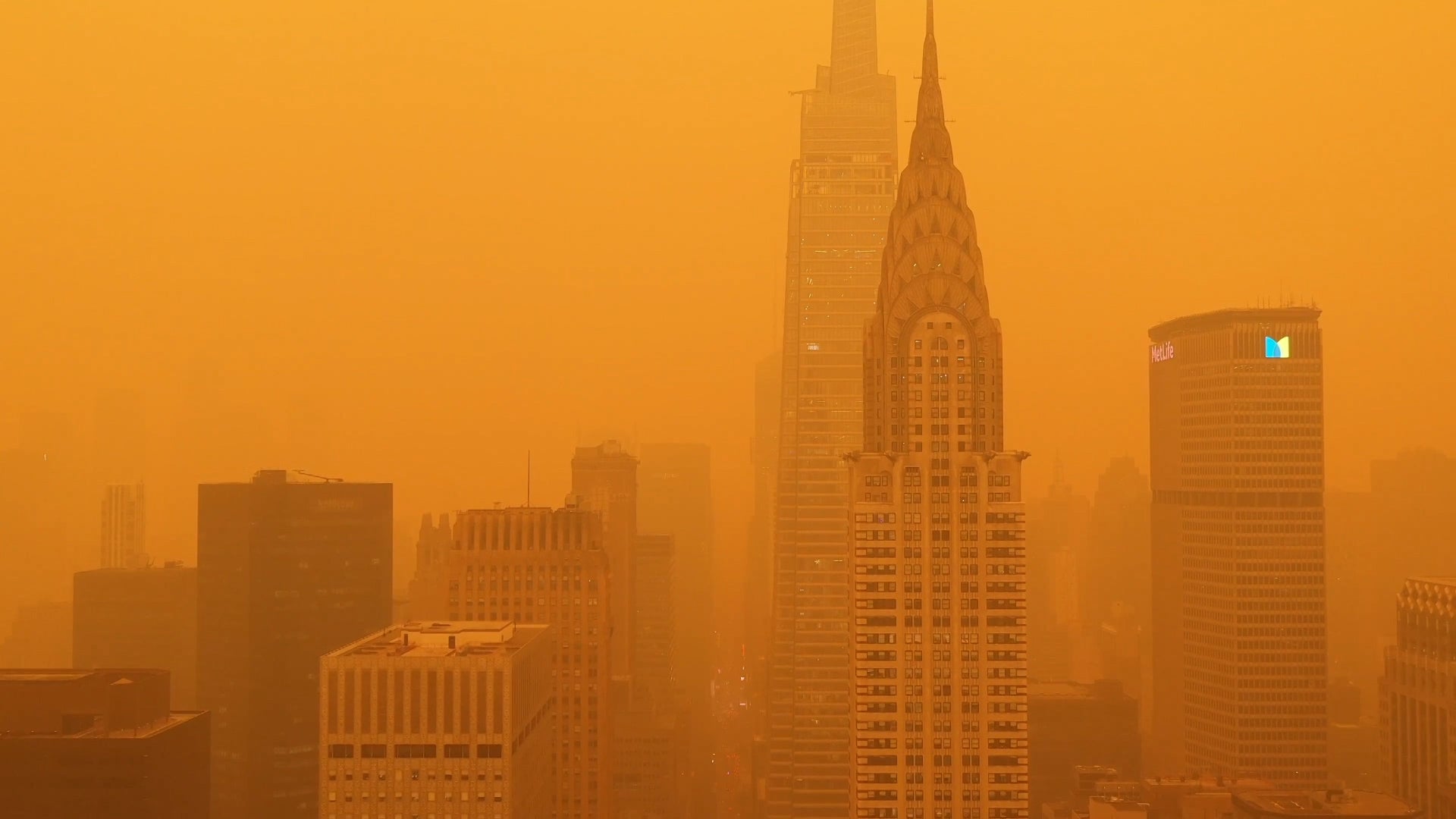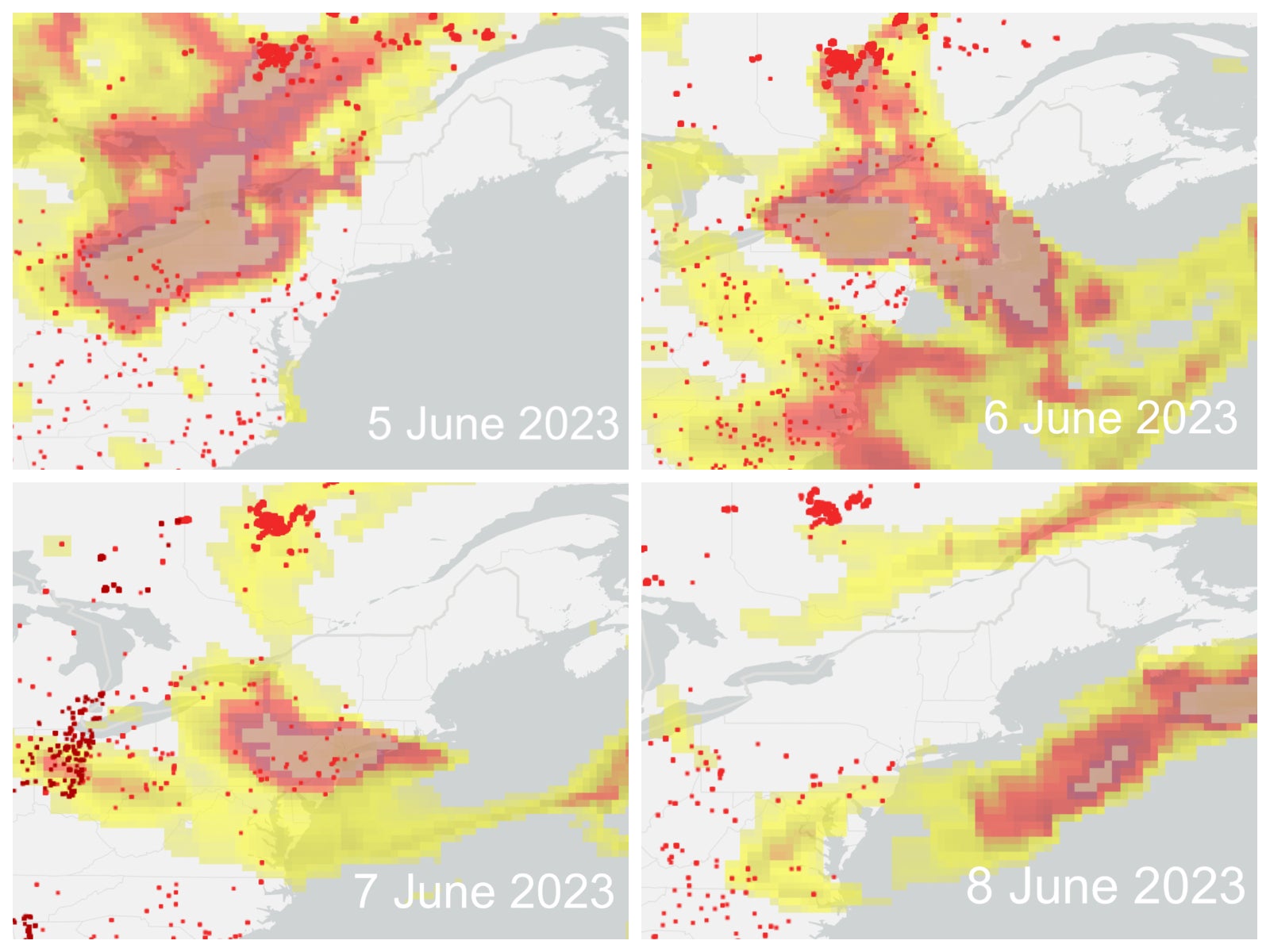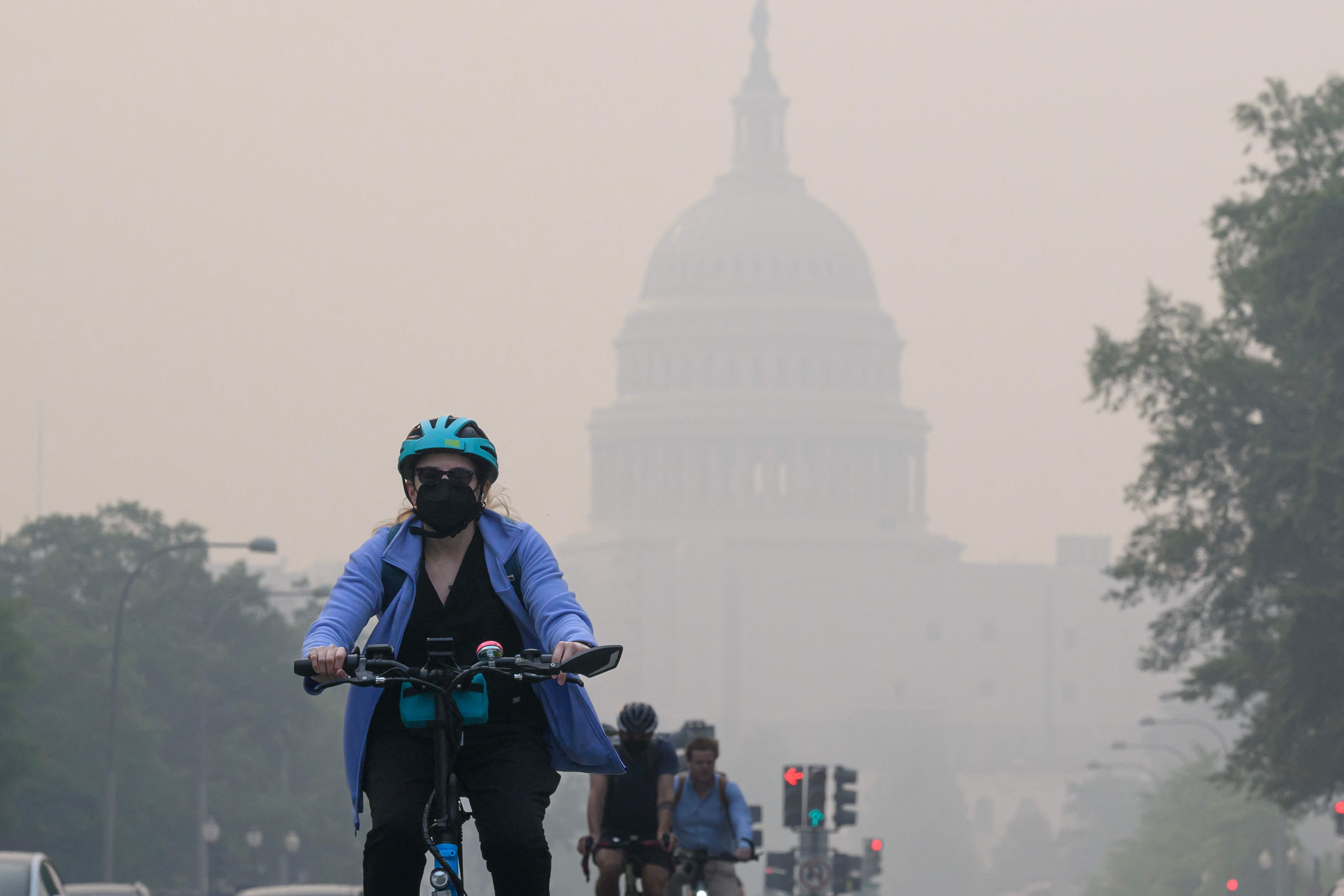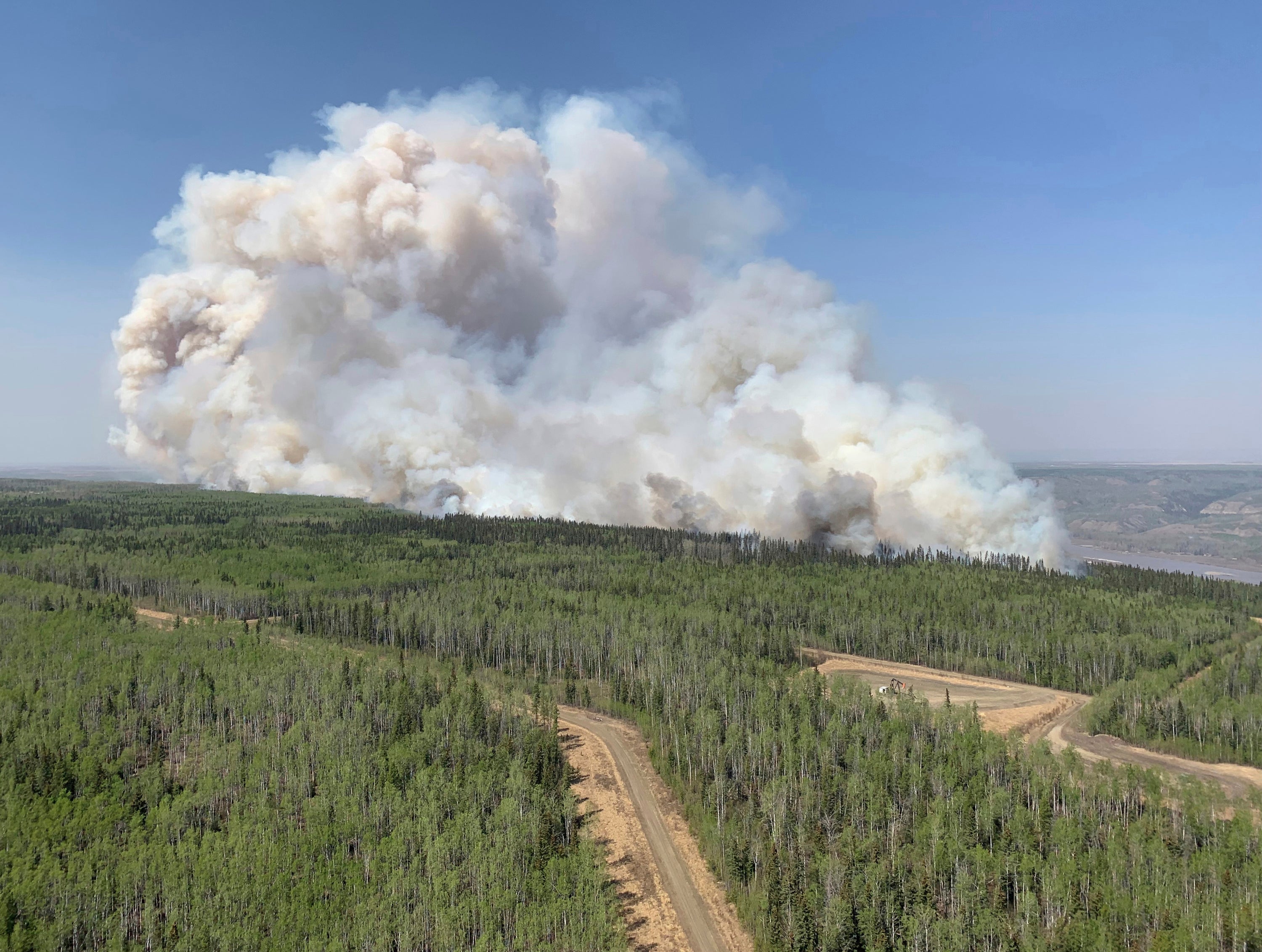Raging wildfires, smoky skies and millions at risk: Behind a bleakly dystopian week in North America
Northeast and Mid-Atlantic unprepared for ‘hazardous’ air quality conditions
Your support helps us to tell the story
From reproductive rights to climate change to Big Tech, The Independent is on the ground when the story is developing. Whether it's investigating the financials of Elon Musk's pro-Trump PAC or producing our latest documentary, 'The A Word', which shines a light on the American women fighting for reproductive rights, we know how important it is to parse out the facts from the messaging.
At such a critical moment in US history, we need reporters on the ground. Your donation allows us to keep sending journalists to speak to both sides of the story.
The Independent is trusted by Americans across the entire political spectrum. And unlike many other quality news outlets, we choose not to lock Americans out of our reporting and analysis with paywalls. We believe quality journalism should be available to everyone, paid for by those who can afford it.
Your support makes all the difference.Millions of people across North America experienced unhealthy to hazardous air quality conditions this past week as thick smoke from over 400 wildfires in Canada blanketed parts of the Northeast, Mid-Atlantic and Midwest.
Major cities like New York, Philadelphia, Detroit and Washington DC issued air quality alerts from Tuesday onward, urging people to largely stay indoors and wear masks outside to prevent smoke inhalation.
The smoky conditions led to apocalyptic-like orange skies with low visibility and a long-lasting haze.
By Wednesday, New York City topped more than 400 on the Air Quality Index (AQI), the US Environmental Protection Agency’s scale for measuring air pollution. On that 0 -500 scale, levels above 400 are deemed “hazardous” to public health.
New Yorkers were unprepared for the dangerous conditions which saw the city ranked worst in the world for air quality on Wednesday.
On Friday, there were more than 420 wildfires burning across nearly every province and territory in Canada, with more than half being labeled as “out of control” by the Canadian Interagency Forest Fire Centre (CIFFC).
As large, erratic wildfires become more common globally, climate scientists warn that it’s unlikely to be the last air pollution crisis.
Here’s what to know about the situation.
Millions at risk from hazardous air
People living in the Northeast of the United States were unprepared for the air quality disaster that struck major cities this week.
“Wildfires were not really a scenario, in all honesty, that I recall us specifically contemplating,” Daniel Kass, the former deputy commissioner for environmental health for New York City, told NBC News.
Even New York City Mayor Eric Adams said that he was confused when he saw the smoke on Wednesday. “It wasn’t until I went outdoors and basically said, ‘What the hell is this?’ It was clear there was something different that was happening in the city,” he said at a press conference.
On Tuesday, thick smoke from the fires around 600 miles north began rolling over cities in the tri-state area including New York City, Buffalo, Albany, Hartford, Connecticut and Jersey City, New Jersey. The worst impacts were felt on Wednesday.

By Thursday, the smoke was shifting west and south over Pennsylvania, Michigan, Virginia, Delaware, West Virginia and Ohio.
Tens of millions of Americans were impacted by the heavy smoke and at least 18 states issued air quality alerts.
Air pollution under AQI 50 is considered “good” while anything over 300 is “hazardous”.
On Monday, the AQI in New York City was 53 - on Wednesday, the Big Apple recorded its worst AQI at a peak of 413.

At an emergency briefing on Wednesday, Mayor Adams requested that New Yorkers limit their outdoor time, wear masks outside, use air purifiers, close all doors and windows.
He also said that school outdoor activities and field trips would be cancelled.
New York City emergency room visits for respiratory-related conditions like asthma jumped from 162 on Tuesday to 309 on Wednesday according to the Department of Health.
The Federal Aviation Administration was forced to delay or ground planes at airports including LaGuardia, Newark and Philadelphia on Wednesday and Thursday.
In Washington DC, a “Code Purple” was issued on Thursday and outdoor events, like the LGBTQ+ Pride Month celebration at the White House and the Nationals baseball game, were postponed.

President Joe Biden issued a statement encouraging people to look out for themselves and keep track of the AQI in their area.
Mr Biden also said that he had spoken with Canadian Prime Minister Justin Trudeau and would be sending more than 600 firefighters from the US to support efforts tackling the monster blazes.
Canada ablaze
While Canada is no stranger to wildfires across its vast expanses of forest, tundra and grassland, the country is experiencing an increasingly extreme wildfire season between May and October due to the climate crisis.
Canada has experienced an estimated 13 times more burning in 2023 compared to the average over the last decade. An estimated 2,300 fires have burned approximately 9.4m acres of land so far this year, said Bill Blair, Canada’s Minister of Emergency Preparedness.
Wildfires are just one in a series of interlinked maladies caused by the climate crisis.
The rising global temperature, driven by emissions from burning fossil fuels, is making droughts more severe.
The provinces of Alberta, Quebec and Saskatchewan have experienced abnormal to severe drought conditions since April, according to the Canadian Drought Monitor.
The unusually dry conditions make vegetation, soil and trees more susceptible to burning which can escalate wildfires quickly. Canada’s wildfires began in late April and quickly picked up in intensity and frequency.
There are around 420 wildfires burning across nearly every province and territory in Canada, with more than half labeled as “out of control” by the Canadian Interagency Forest Fire Centre (CIFFC).
Most of the fires are in Quebec with 144 blazes followed by Alberta, British Columbia and Ontario.

“We are already seeing one of the worst wildfire seasons on record,” Steven Guilbeault, Canada’s Minister of Environment and Climate Change, said in a statement.
“We must prepare for a long summer.”
At least 20,000 Canadians have been displaced by evacuations so far.
Looking to the future
Outrageous wildfires and increasing problems with air quality are expected to worsen as the climate crisis deepens.
Wildfires are expected to increase by nearly 15 per cent in 2023, according to a United Nations environment report last year. The report also calls for governments to better prepare for tackling wildfires, and direct more resources toward the firefighters risking their lives.
Yet, climate scientists and activists this week also reiterated that, in the long-term, the solution to avoid worsening climate-driven wildfires and their associated choking air pollution is getting the planet off fossil fuels.
As climate experts, Susan Joy Hassol and Professor Michael E. Mann, wrote in The Independent on Friday, the east coast of North America “is one of the locations where we expect the greatest future increase in the hot, dry, summer weather conducive to fires”.
“So the current fires are a preview of far worse things to come if we don’t rein in fossil fuel burning and the resulting carbon pollution that continues to heat up the planet,” they added.




Join our commenting forum
Join thought-provoking conversations, follow other Independent readers and see their replies
Comments